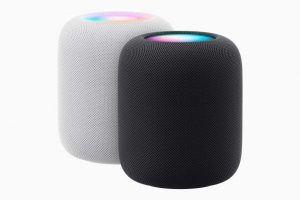DXPs help marketers to deliver coherent, customized and compelling user experiences to more devices and platforms than ever before.

A digital experience platform, also called a DXP, is software that enables the creation, management, delivery and optimization of digital experiences in a variety of channels and contexts. A DXP differs from a content management system (CMS) in that it delivers to multiple digital channels, has commerce built-in and scales, among other things.
The core capability of the digital experience platform is managing and delivering the digital user experience — primarily web pages, but also mobile apps and other types of content — a need that has long been served by content management systems (CMS). While the growth of CMSs let marketers wrest control over websites from the IT department, which was largely in charge of the early web, marketers’ needs have grown beyond CMSs’ ability to meet them in recent years. Over time, businesses have undergone digital transformations to drive efficiencies, remain competitive in the marketplace and respond to changes in customer behavior. To perform everything expected of a modern marketing operation, marketers adopted adjacent technologies to enhance what their CMS was able to do.
For example, Web analytics helped marketers gather data about user behavior and the conversion funnel, with more sophisticated optimization systems allowing for A/B and multivariate testing. Customer journey analytics (CJA) gave marketers a more sophisticated sense of the path users take on the route to purchase. For many businesses, e-commerce capabilities became essential to their digital operations. Connecting all the data in these systems to the right customer or prospect and keeping track of it all required a customer relationship management (CRM) tool or even a customer data platform (CDP).
Applying the insights gained required another set of tools for orchestration, and making sure digital platforms were safe, reliable and fast required technologies like content delivery networks (CDNs).
Though each of these technologies provides a way to improve the user experience and helps modern marketers meet the demands now placed on them, this hodgepodge of systems has increasingly become a liability. In some cases, marketers are weighed down by the costs of licensing all of these disparate systems. With so many moving parts, there are more opportunities for things to go wrong.
These challenges, along with developments like the increased digitization of business brought about by the COVID pandemic and ever-heightened customer expectations, are some of the factors that have led to the rise of the DXP.
What DXPs do
A DXP enables the creation, management, delivery and optimization of digital experiences in a variety of channels and contexts. It serves as the hub that brings together capabilities from multiple applications or modules to deliver a seamless digital experience.
Marketers considering the adoption of a DXP should understand that the way these platforms have come together — through acquisitions and integrations, for the most part — means that native capabilities differ from one offering to another. Additionally, the modularity of these offerings is a point of differentiation — some vendors offer more composable configurations than others. However, all should feature either native functionality or connections that enable the full range of capabilities explored here.
The core capabilities of DXPs, provided either natively within the platform or via an integration include:
- Content management, which may include digital asset management and/or product information management (PIM)
- Support for multiple platforms and types of experiences
- Delivery, presentation and orchestration of content and experiences
- Personalization
- Analytics and optimization
- Search and navigation
- Customer data management
- Strong functionality for integration and extensibility
Additional capabilities which may or may not be part of a DXP are:
- Commerce capabilities, including payment gateways
- Customer relationship management and communications
- Campaign management
- Marketing performance management
- Development platforms for multiple types of experiences, including low-code application development
- Data enrichment
Let’s explore each of these capabilities in more detail.
Content management
Digital experience platforms provide CMS functionality such as an interface for inputting and editing textual content. This may include built-in or customizable workflows for collaboration, editing and approvals. Because this content repository will store elements to be delivered and displayed on multiple platforms and in a variety of contexts, the tools typically allow for extensive customization of the fields associated with an individual piece of content.
Functionality also often includes the capability to re-use and re-purpose modular content blocks within larger assets.
Like CMSs, DXPs will always include some sort of media library supporting images and videos, but some go further by integrating full-fledged DAM or PIM solutions. Support for more advanced types of content, such as 3D objects, VR or AR will differ from solution to solution.
Support for multiple platforms and types of experiences
One of the developments driving the growth of DXPs is the proliferation of devices and platforms to which marketers must deliver content. DXPs enable the same content, or versions of the same content, to be delivered to websites, mobile apps, smart speakers, podcasts and OTT. They may also support platforms, such as in-store kiosks or drive-through displays, that take digital content into the bricks-and-mortar world.
The DXP may incorporate functionality to convert content from one format to another (PDFs to JPGs, for example), or from one language to another, to facilitate the customization of content to the place where it will be consumed.
Delivery, presentation and orchestration of content and experiences
In addition to serving as a repository for content of all types, DXPs must be able to (either natively or through integrations) deliver experiences that utilize personalization and context awareness. Many players favor a headless or hybrid approach, which allows for flexibility in presentation and enables marketers to more easily make shifts to respond to changes in the marketplace. This element may include or link to a content delivery network, which can
improve the speed of delivery and redundancy.
Personalization
Key to that delivery and presentation is the ability to leverage data and insights to tailor experiences to the needs of the content consumer. This capability may be enhanced by artificial intelligence or machine learning, which can enable automated personalization.
Personalization features tie closely into the analytics and optimization functionality as well as customer data management.
Analytics and optimization
DXPs may include features for A/B or multivariate testing and optimization, as well as analytics to provide insight on customer journeys, campaign optimization and the business impact of content.
Search and navigation
DXPs include features that enable sophisticated site search by indexing content and interpreting search queries, as well as presenting results. This can also include category pages to aid navigation, as well as filters that let users drill down to find the information or products they’re seeking.
Customer data management
Customer data management in a DXP is often offered via a built-in or integrated customer data platform, which collects data from across the enterprise and resolves identity to create individual profiles. Features include the development of audiences that can be utilized in the orchestration of campaigns or experience personalization.
Strong functionality for integration and extensibility
This is probably the most important capability offered by DXPs, because it is fundamental to their role of bringing together all of the technologies that contribute to a customer-centric experience. To fulfill this mandate, many vendors offer pre-built connectors, plug-ins or advanced integrations that have already been created and proven reliable. Such capabilities can speed implementation and time to realizing value.
When pre-built connectors aren’t available, DXPs have APIs that enable integrations, though setting these up will require application development.
It should be noted, however, that all APIs are not equal. While a REST API has become standard for nearly every martech application, many developers don’t consider it adequate for the content management use case because it is relatively indiscriminate in the data it returns for queries. Some vendors offer the newer GraphQL API, which is more flexible, allowing more specific queries that deliver more granular results. This efficiency reduces the
load on the webserver and therefore results in a faster experience.
Another related capability — stronger in some vendors than others — is the community of developers, systems integrators and agencies that vendors have fostered. In many cases, especially for customers with complex business needs, the support of strategic and integration partners will be critical, especially at the start of DXP adoption. In short, the more developers out there familiar with the ins and outs of a vendor’s technologies, the easier it will be for a customer to find assistance at a reasonable price point.
Low- or no-code development platforms
While this capability is not universal among vendors, it’s an area that appears to be gaining steam. These platforms allow non-developers to create applications and experiences in a more user-friendly interface — more user-friendly than writing lines of code, anyway. Using these platforms still requires a fairly sophisticated understanding of technology, however.
What are the benefits of using digital experience platforms?
Modern marketers are called upon to deliver coherent, customized and compelling user experiences to more devices and platforms than ever before. Enterprise digital experience platforms can help marketers in this pursuit by providing the following benefits:
- Faster, higher-performance websites with better search engine optimization. Traditional CMSs have become a pain point for marketers seeking to speed the delivery of their content — especially on more bandwidth-constrained devices like smartphones. With Google penalizing slow-loading sites by ranking them lower in search results, failing to achieve speed benchmarks can have serious revenue implications. Adopting a more modern headless or hybrid architecture that shifts the computing heavy lifting to earlier in the publishing process — well before the end-user device requests the content — can improve speed, and with it, revenue, dramatically.
- Ability to deliver a better user experience. Beyond the speed improvements offered by headless and hybrid CMSs, they also allow developers to tap into more modern programming languages and frameworks. Additionally, developers can be more creative and craft solutions that are more tightly tailored to a business’ needs, rather than being constrained by the limitations of a traditional CMS.
- More stability and reliability. Traditional CMSs deliver websites from a single server or a few redundant servers. With the DXP approach, content can be delivered from a highly distributed content delivery network, where one server can pick up the slack if another is down, ensuring that the site is never unavailable. This benefit can be especially compelling for e-commerce sites, which risk customers buying elsewhere if they have technical difficulties.
- Easier delivery of content to new and emerging platforms. The number and types of digital devices — from desktop computers to in-store kiosks to VR headsets — is inevitably going to continue to grow. Rather than develop an entirely new CMS to deliver content to these new device types and apps, a DXP allows brands to utilize the existing content repository with a new presentation layer designed for that particular form factor. This also saves the ongoing time and resources that would be required to copy content from one platform to another when it’s meant to be delivered to multiple destinations.
- Enhanced ability to reuse and repurpose content, leading to greater ROI. What a digital asset management system can do for visual content, a headless or hybrid CMS can do for textual content — it can serve as the single source of truth for brands’ content strategies. With tagging and other capabilities built into these platforms, it becomes easier to find, reuse and repurpose pieces of content for other devices and locales (sometimes automatically), resulting in greater revenue driven from the initial investment in creating each piece of content. Given the fact that DXPs often incorporate DAM or PIM capabilities, these benefits carry over to content in other formats, as well.
- Fostering a modular, more agile approach to content. While it’s difficult to quantify, another benefit of these systems is that they encourage marketers to think about content in a more granular and agile manner. The more flexible architecture and general approach enables regular learning and iteration, and may help marketers gain a different perspective.
- Unification of analytics, giving marketers a more comprehensive view of strategy and spend. DXPs also unify analytics so the task of evaluating the ROI delivered from content can be done on a single platform, rather than shuttling data from one system to another.
- Improved personalization, optimization and the unification of customer data. A DXP’s approach to managing customer data — especially those with full-fledged CDPs as parts of the platform — brings with it the benefits of unifying data across the enterprise. This allows marketers to get a more comprehensive view of the customer journey which, in turn, lets them customize the user experience to deliver the next-best-action for each individual.
The post What is a digital experience platform or DXP and is it the future of content management? appeared first on MarTech.
(21)







